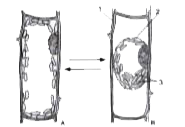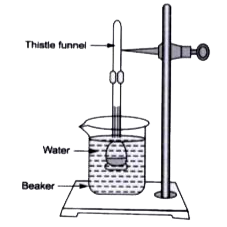The filterate in PCT is
(a) isotonic
(b) hypotonic
(c) hypertonic
(d) watery
isotonic
hypotonic
hypertonic
watery
To solve the question about the nature of the filtrate in the proximal convoluted tubule (PCT), we can follow these steps:
1. Understand the PCT: The proximal convoluted tubule (PCT) is a part of the nephron in the kidney where a significant amount of reabsorption occurs. It is responsible for reabsorbing approximately 65% of the glomerular filtrate.
2. Identify the Composition of Filtrate: The filtrate in the PCT contains water, ions, and various solutes. As the filtrate moves through the PCT, many of these components are reabsorbed back into the bloodstream.
3. Reabsorption Process: During the reabsorption process, solutes such as glucose, amino acids, and bicarbonate ions are actively transported back into the blood. This process alters the concentration of the filtrate.
4. Determine the Nature of the Filtrate: Due to the reabsorption of solutes, the concentration of the filtrate becomes similar to that of blood plasma. This means that the filtrate in the PCT is isotonic to the blood plasma.
5. Conclusion: Based on the above information, we can conclude that the filtrate in the PCT is isotonic.
Final Answer:
The correct option is (a) isotonic.
---
The correct option is (a) isotonic.
Topper's Solved these Questions
- BOOK - ICSECHAPTER - EXCRETORY PRODUCTS AND THEIR ELIMINATIONEXERCISE - REVIEW QUESTIONS (Fill in the blanks: )14videos
EXCRETORY PRODUCTS AND THEIR ELIMINATION
- BOOK - ICSECHAPTER - EXCRETORY PRODUCTS AND THEIR ELIMINATIONEXERCISE - REVIEW QUESTIONS (True/false: )10videos
EXCRETORY PRODUCTS AND THEIR ELIMINATION
- BOOK - ICSECHAPTER - ENZYMES EXERCISE - REVIEW QUESTIONS (LONG ANSWER TYPE QUESTIONS)6videos
ENZYMES
- BOOK - ICSECHAPTER - KINGDOM FUNGI EXERCISE - REVIEW QUESTIONS (LONG ANSWER TYPE QUESTIONS)5videos
KINGDOM FUNGI
Similar Questions
Knowledge Check
- Question 1 - Select One
In the descending limb of loop of Henle, the filtrate becomes progressively
(a) isotonic
(b) hypotonic
(c) hypertonic
(d) wateryAisotomicBhypotonicChypertonicDwatery
In the given figures 'A' shows a cell in the normal state and 'B' shows the same cell after leaving it in a certain solution for a few minutes :

Was the solution isotonic, hypotonic or hypertonic in which the cell was kept ?View SolutionSelect the correct answer out of the four available choices given under question :
The space between the cell wall and plasma membrane in plasmolysed cell is filled with:
(i) isotonic solution
(ii) hypotonic solution
(iii) hypertonic solution
(iv) waterView SolutionIn descending limb of loop of Henle, filtrate becomes
(a) Hypotonic to plasma
(b) Isotonic to plasma
(c) Hypertonic to plasma
(d) Isotonic to lymphView SolutionCompare the cells kept in isotonic, hypotonic and hypertonic solutions.
View SolutionMaximum water potential is present in
(a) Hypotonic solution
(b) Hypertonic solution
(c) Isotonic solution
(d) Pure waterView SolutionGiven alongside is the diagram of an apparatus set-up to study a very important physiological process.

Is sugar solution hypotonic or hypertonic?View SolutionExplain the role of ADH in forming a hypotonic or hypertonic urine.
View Solution

